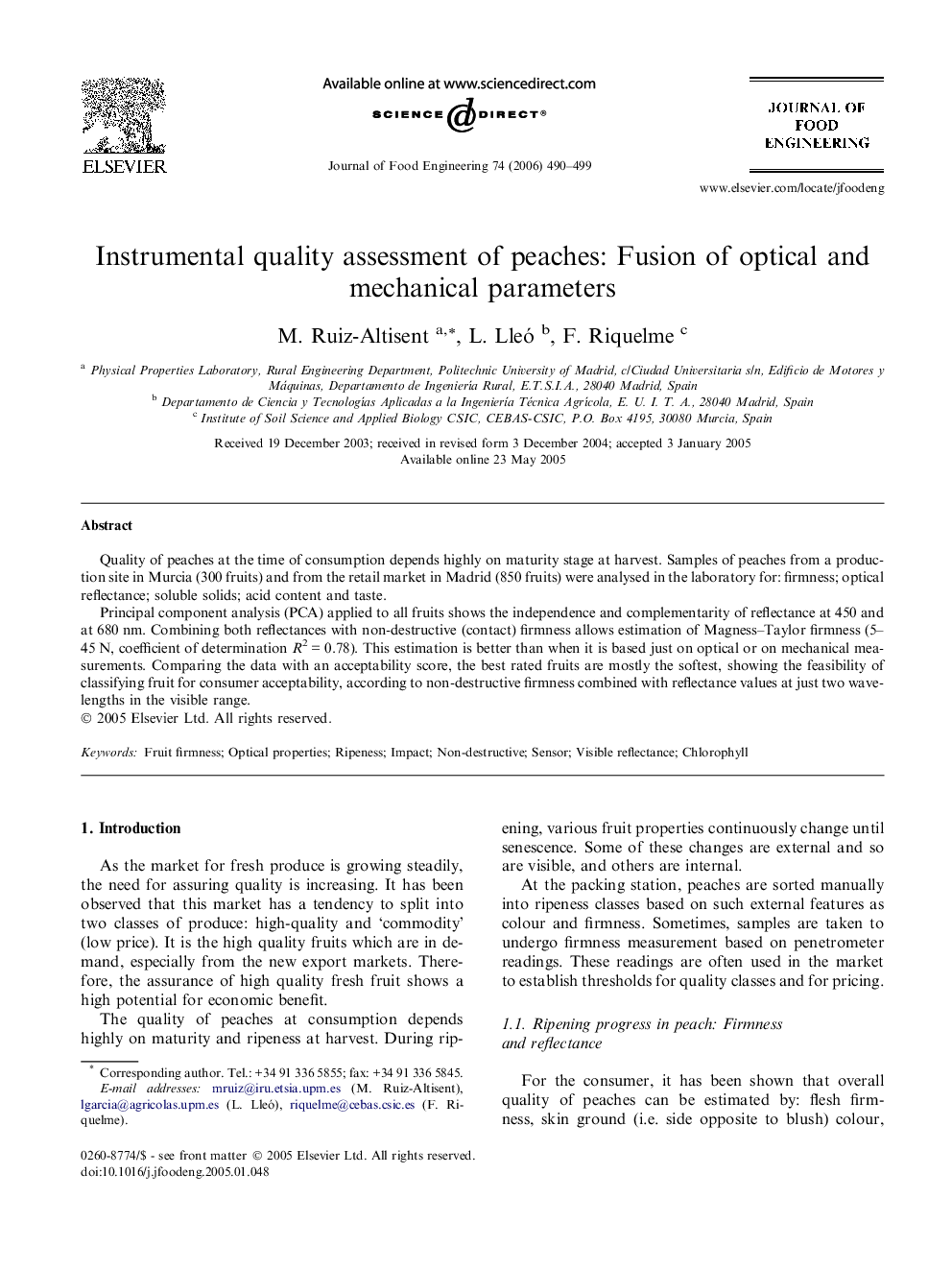| Article ID | Journal | Published Year | Pages | File Type |
|---|---|---|---|---|
| 225029 | Journal of Food Engineering | 2006 | 10 Pages |
Quality of peaches at the time of consumption depends highly on maturity stage at harvest. Samples of peaches from a production site in Murcia (300 fruits) and from the retail market in Madrid (850 fruits) were analysed in the laboratory for: firmness; optical reflectance; soluble solids; acid content and taste.Principal component analysis (PCA) applied to all fruits shows the independence and complementarity of reflectance at 450 and at 680 nm. Combining both reflectances with non-destructive (contact) firmness allows estimation of Magness–Taylor firmness (5–45 N, coefficient of determination R2 = 0.78). This estimation is better than when it is based just on optical or on mechanical measurements. Comparing the data with an acceptability score, the best rated fruits are mostly the softest, showing the feasibility of classifying fruit for consumer acceptability, according to non-destructive firmness combined with reflectance values at just two wavelengths in the visible range.
